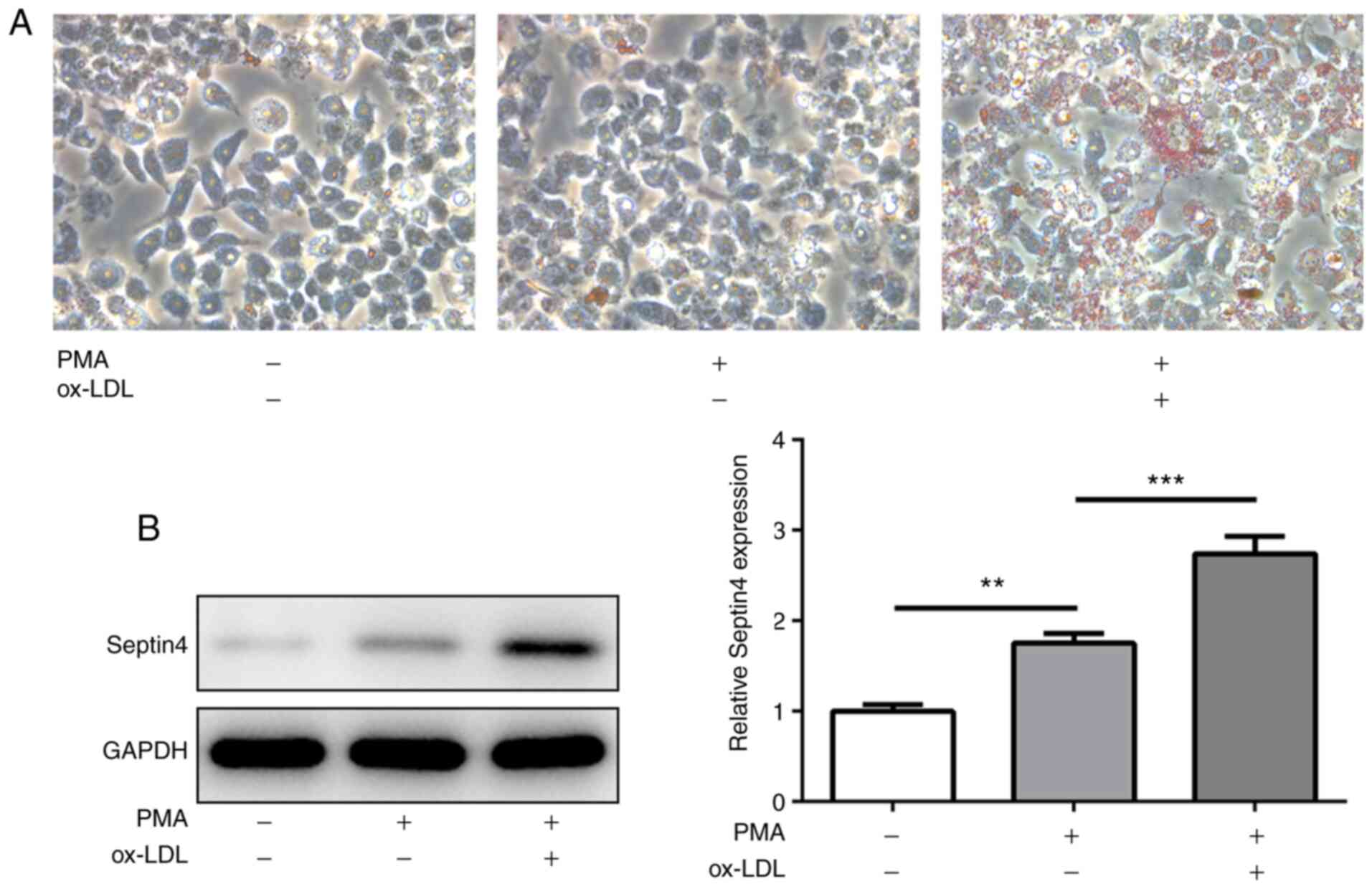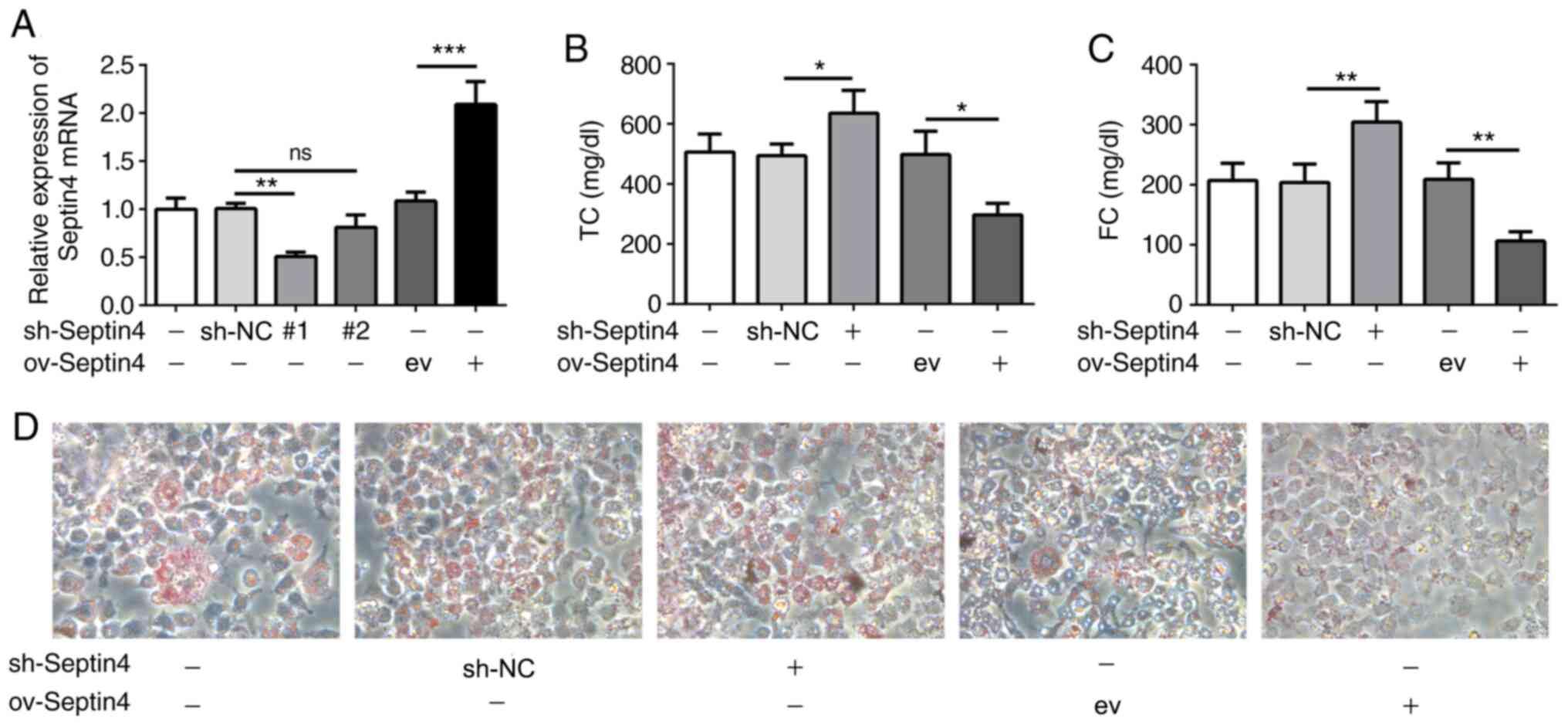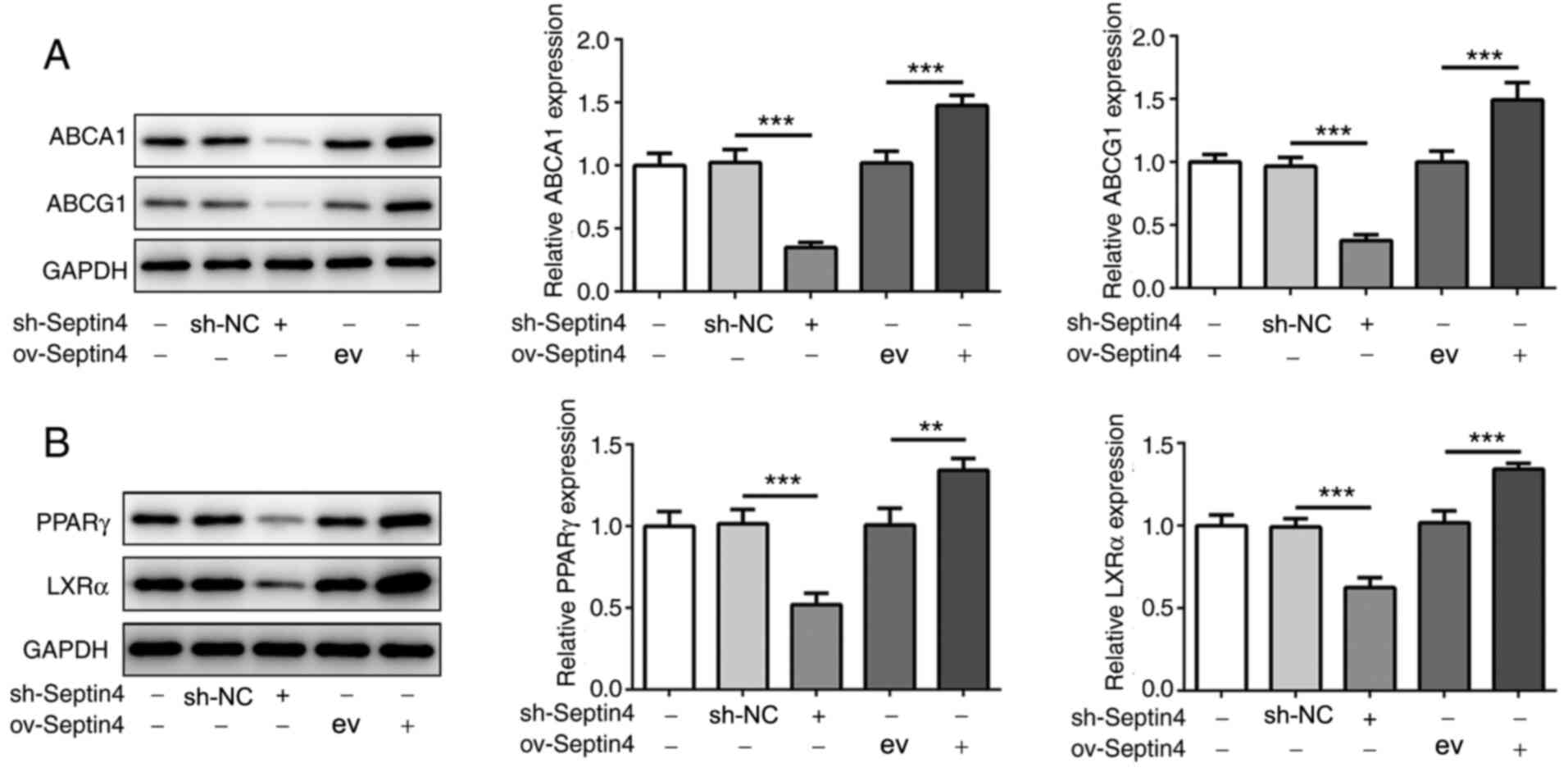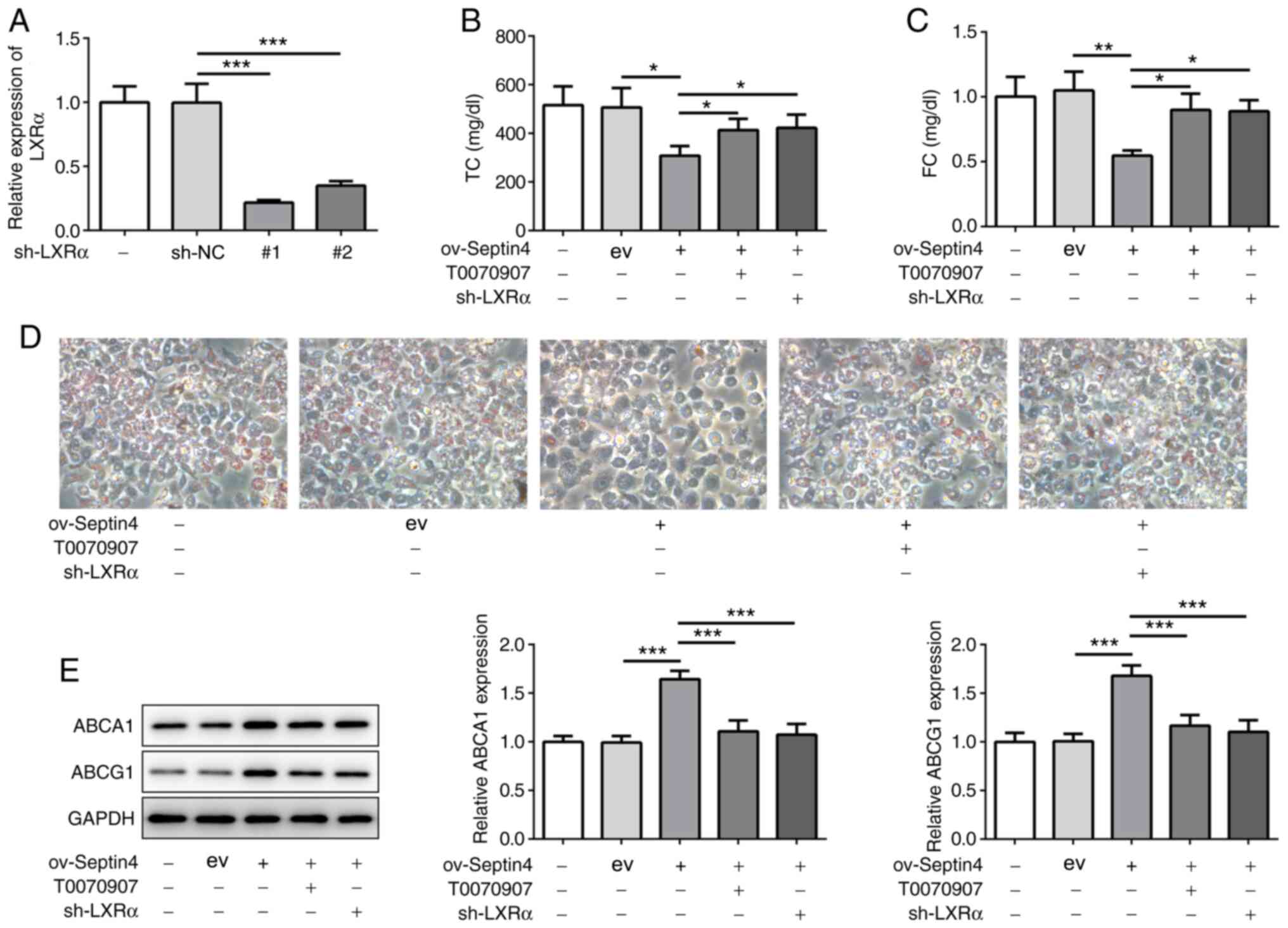|
1
|
Geovanini R and Libby P: Atherosclerosis
and inflammation: Overview and updates. Clin Sci (Lond).
132:1243–12522. 2018.PubMed/NCBI View Article : Google Scholar
|
|
2
|
Palasubramaniam J, Wang X and Peter K:
Myocardial Infarction-From Atherosclerosis to Thrombosis.
Arterioscler Thromb Vasc Biol. 39:e176–e185. 2019.PubMed/NCBI View Article : Google Scholar
|
|
3
|
Yang X, Li J, Hu D, Chen J, Li Y, Huang J,
Liu X, Liu F, Cao J, Shen C, et al: Predicting the 10-year risks of
atherosclerotic cardiovascular disease in Chinese population: The
China-PAR Project (Prediction for ASCVD Risk in China).
Circulation. 134:1430–1440. 2016.PubMed/NCBI View Article : Google Scholar
|
|
4
|
He J, Gu D, Wu X, Reynolds K, Duan X, Yao
C, Wang J, Chen CS, Chen J, Wildman RP, et al: Major causes of
death among men and women in China. N Engl J Med. 353:1124–1134.
2005.PubMed/NCBI View Article : Google Scholar
|
|
5
|
Zhou M, Wang H, Zhu J, Chen W, Wang L, Liu
S, Li Y, Wang L, Liu Y, Yin P, et al: Cause-specific mortality for
240 causes in China during 1990-2013: A systematic subnational
analysis for the Global Burden of Disease Study 2013. Lancet.
387:251–272. 2016.PubMed/NCBI View Article : Google Scholar
|
|
6
|
Wang D, Yang Y, Lei Y, Tzvetkov NT, Liu X,
Yeung AWK, Xu S and Atanasov AG: Targeting foam cell formation in
atherosclerosis: Therapeutic potential of natural products.
Pharmacol Rev. 71:596–670. 2019.PubMed/NCBI View Article : Google Scholar
|
|
7
|
Chistiakov DA, Melnichenko AA, Myasoedova
VA, Grechko AV and Orekhov AN: Mechanisms of foam cell formation in
atherosclerosis. J Mol Med (Berl). 95:1153–1165. 2017.PubMed/NCBI View Article : Google Scholar
|
|
8
|
Chistiakov DA, Bobryshev YV and Orekhov
AN: Macrophage-mediated cholesterol handling in atherosclerosis. J
Cell Mol Med. 20:17–28. 2016.PubMed/NCBI View Article : Google Scholar
|
|
9
|
Yu XH, Fu YC, Zhang DW, Yin K and Tang CK:
Foam cells in atherosclerosis. Clin Chim Acta. 424:245–252.
2013.PubMed/NCBI View Article : Google Scholar
|
|
10
|
Wang JM, Wang D, Tan YY, Zhao G and Ji ZL:
22(R)-hydroxycholesterol and pioglitazone synergistically decrease
cholesterol ester via the PPARγ-LXRα-ABCA1 pathway in cholesterosis
of the gallbladder. Biochem Biophys Res Commun. 447:152–157.
2014.PubMed/NCBI View Article : Google Scholar
|
|
11
|
Kim JS, Lee YH, Chang YU and Yi HK: PPARγ
regulates inflammatory reaction by inhibiting the MAPK/NF-κB
pathway in C2C12 skeletal muscle cells. J Physiol Biochem.
73:49–57. 2017.PubMed/NCBI View Article : Google Scholar
|
|
12
|
Sun X, Yang Y, Zhu D, Qian H, Duan Y, He
X, Gu X, Sun W and Zhu Y: Expression of Septin4 in human hepatic
stellate cells LX-2 stimulated by LPS. Inflammation. 36:539–548.
2013.PubMed/NCBI View Article : Google Scholar
|
|
13
|
Zhao X, Feng H, Wang Y, Wu Y, Guo Q, Feng
Y, Ma M, Guo W, Song X, Zhang Y, et al: Septin4 promotes cell death
in human colon cancer cells by interacting with BAX. Int J Biol
Sci. 16:1917–1928. 2020.PubMed/NCBI View Article : Google Scholar
|
|
14
|
Zhang N, Zhang Y, You S, Tian Y, Lu S, Cao
L and Sun Y: Septin4 Prevents PDGF-BB-induced HAVSMC Phenotypic
Transformation, Proliferation and Migration by Promoting
SIRT1-STAT3 Deacetylation and Dephosphorylation. Int J Biol Sci.
16:708–718. 2020.PubMed/NCBI View Article : Google Scholar
|
|
15
|
Sun Y and Xu J: TCF-4 Regulated
lncRNA-XIST promotes M2 polarization of macrophages and is
associated with lung cancer. OncoTargets Ther. 12:8055–8062.
2019.PubMed/NCBI View Article : Google Scholar
|
|
16
|
Ma MM, Jin CC, Huang XL, Sun L, Zhou H,
Wen XJ, Huang XQ, Du JY, Sun HS, Ren ZX, et al: Clcn3 deficiency
ameliorates high-fat diet-induced obesity and adipose tissue
macrophage inflammation in mice. Acta Pharmacol Sin. 40:1532–1543.
2019.PubMed/NCBI View Article : Google Scholar
|
|
17
|
Livak KJ and Schmittgen TD: Analysis of
relative gene expression data using real-time quantitative PCR and
the 2(-Delta Delta C(T)) Method. Methods. 25:402–408.
2001.PubMed/NCBI View Article : Google Scholar
|
|
18
|
Zhu Y, Xian X, Wang Z, Bi Y, Chen Q, Han
X, Tang D and Chen R: Research progress on the relationship between
atherosclerosis and inflammation. Biomolecules.
8(80)2018.PubMed/NCBI View Article : Google Scholar
|
|
19
|
Kattoor AJ, Kanuri SH and Mehta JL: Role
of Ox-LDL and LOX-1 in Atherogenesis. Curr Med Chem. 26:1693–1700.
2019.PubMed/NCBI View Article : Google Scholar
|
|
20
|
Wang N, Xu F, Lu S, Zhang N and Sun Y:
Septin4 as an autophagy modulator regulates Angiotensin-II mediated
VSMCs proliferation and migration. Biochem Biophys Res Commun.
525:272–279. 2020.PubMed/NCBI View Article : Google Scholar
|
|
21
|
Chistiakov DA, Orekhov AN and Bobryshev
YV: Vascular smooth muscle cell in atherosclerosis. Acta Physiol
(Oxf). 214:33–50. 2015.PubMed/NCBI View Article : Google Scholar
|
|
22
|
Bennett MR, Sinha S and Owens GK: Vascular
smooth muscle cells in Atherosclerosis. Circ Res. 118:692–702.
2016.PubMed/NCBI View Article : Google Scholar
|
|
23
|
Westerterp M, Fotakis P, Ouimet M, Bochem
AE, Zhang H, Molusky MM, Wang W, Abramowicz S, la Bastide-van
Gemert S, Wang N, et al: Cholesterol efflux pathways suppress
inflammasome activation, NETosis, and atherogenesis. Circulation.
138:898–912. 2018.PubMed/NCBI View Article : Google Scholar
|
|
24
|
Lin XL, Hu HJ, Liu YB, Hu XM, Fan XJ, Zou
WW, Pan YQ, Zhou WQ, Peng MW and Gu CH: Allicin induces the
upregulation of ABCA1 expression via PPARγ/LXRα signaling in THP-1
macrophage-derived foam cells. Int J Mol Med. 39:1452–1460.
2017.PubMed/NCBI View Article : Google Scholar
|
|
25
|
Grygiel-Górniak B: Peroxisome
proliferator-activated receptors and their ligands: Nutritional and
clinical implications - a review. Nutr J. 13(17)2014.PubMed/NCBI View Article : Google Scholar
|


















